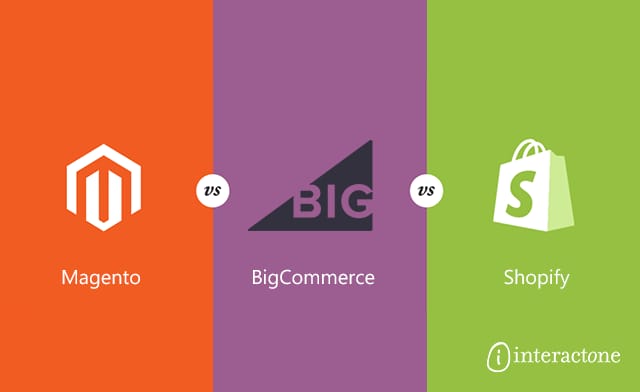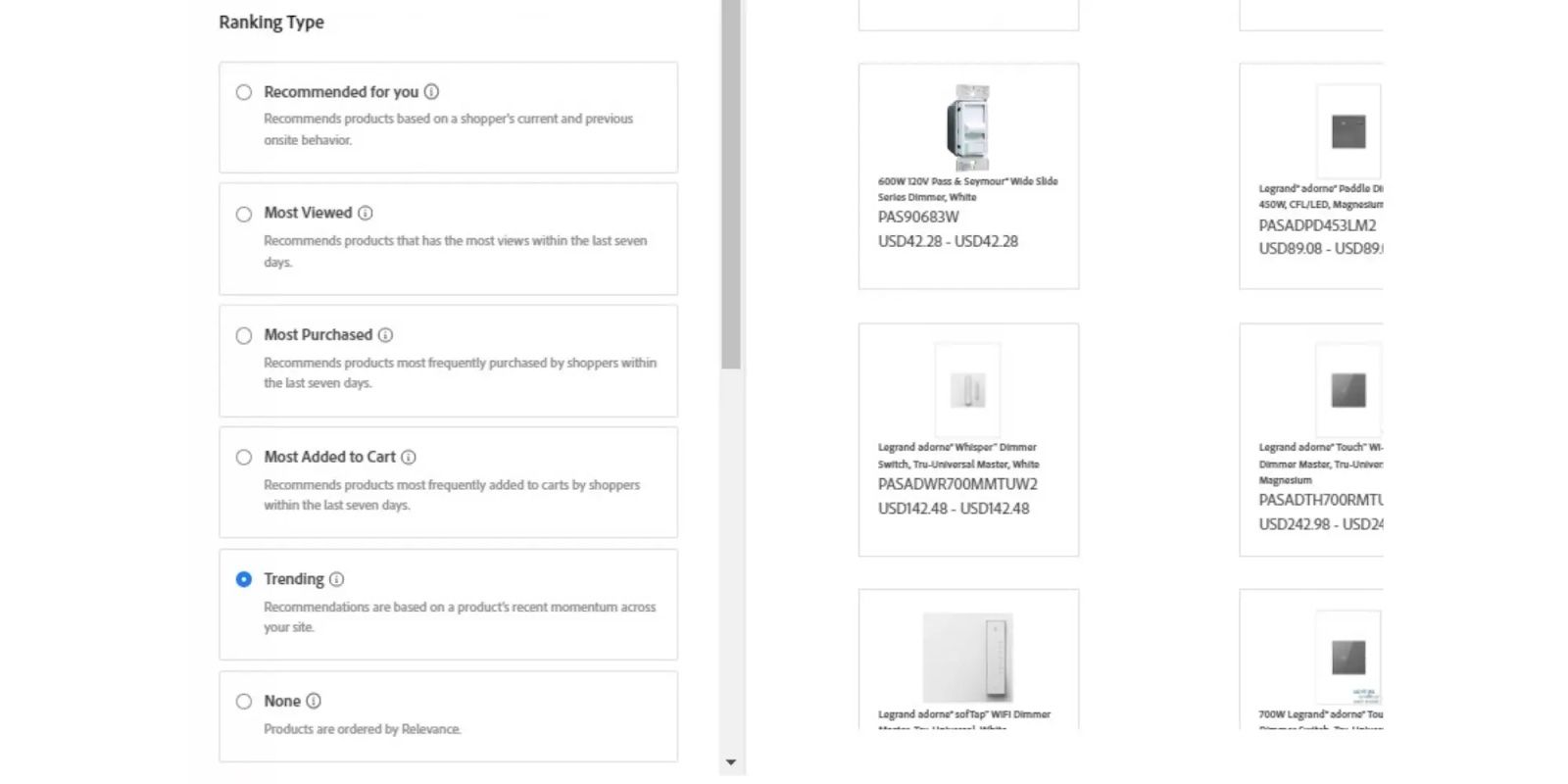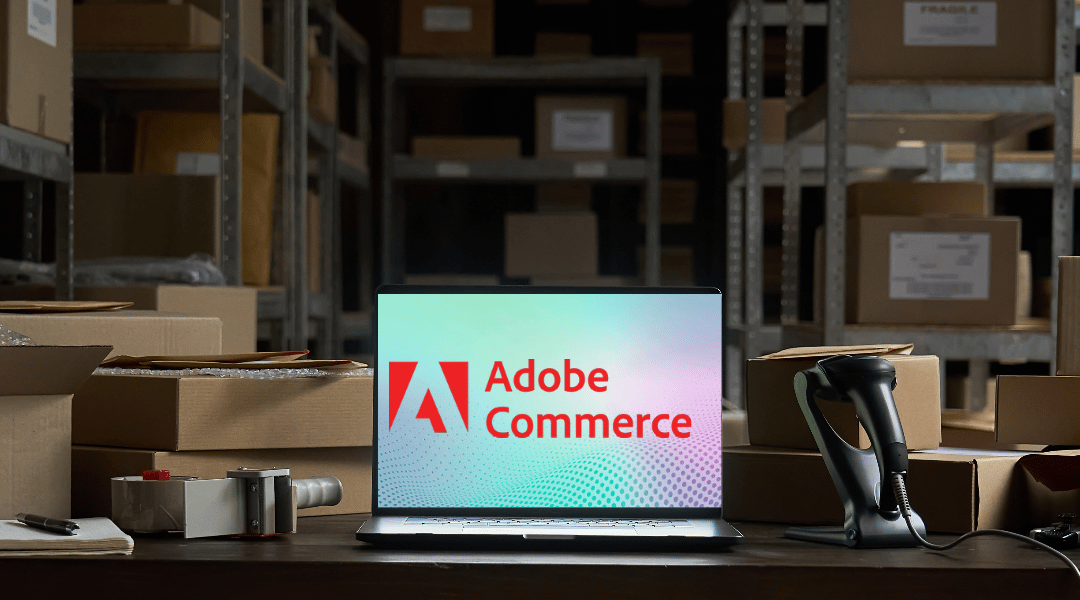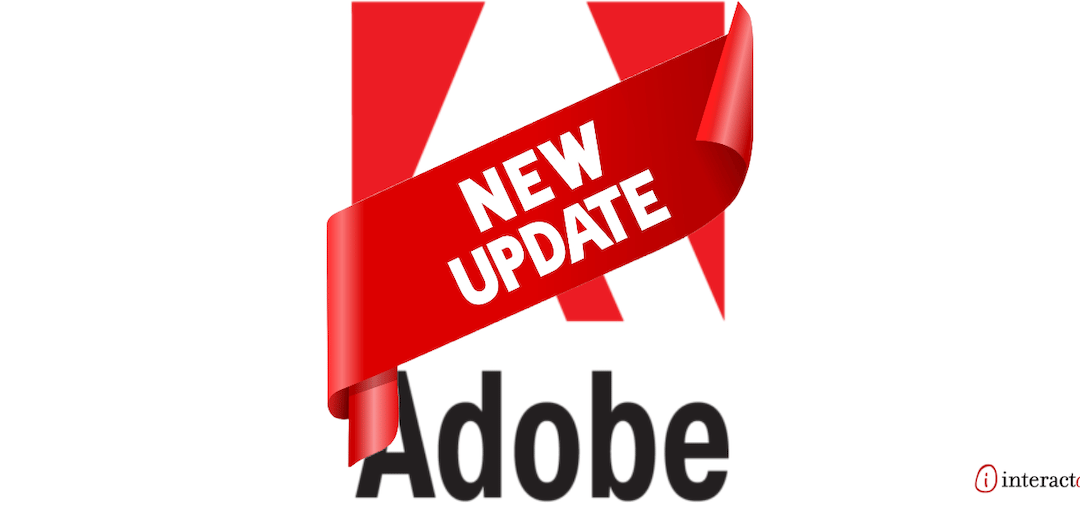Magento: Robust, Highly Scalable and Flexible
Magento has two main editions: Magento Open Source and Adobe Commerce. Magento Open Source is free, while Adobe Commerce is a paid, enterprise-level solution with additional features and support.
Known for its robustness and flexibility, Magento’s open-source nature allows full control over your website’s hosting, design, and functionality. Magento is well-suited for large-scale B2B operations with complex eCommerce needs, including buyer management, special payment terms, custom client shipping methods, customer-specific pricing, requisition lists, and order scheduling. This solution suits various business sectors, including wholesale and distribution, manufacturing, healthcare, and automotive companies like Ford. These industries require a high degree of personalization in their eCommerce platforms.
Target Users: Open-source platform designed to power enterprise eCommerce businesses
Key Features:
- Feature-rich eCommerce platform for enterprise brands.
- Offers extensive customization and scalability, but is relatively complex and better suited for technically savvy business owners and large establishments.
What are Magento’s features?
Magento offers a diverse collection of features for eCommerce businesses, including product management, customer management, order management, and content management. It supports various product types, such as simple, configurable, grouped, and virtual or downloadable products. Magento is known for its flexibility and customization options, allowing developers to create unique and tailored online stores.
Is Magento good for scalability and flexibility?
Magento is designed to be scalable, making it usable for small companies but better suited for mid to large enterprises. Renowned for its ability to handle enterprise-level commerce, it can handle a high volume of products, orders, and website traffic. Magento offers high performance for those with a large inventory. Whether your business deals with thousands or millions of SKUs, Magento’s architecture is designed to scale efficiently. This ensures a smooth user experience even as your store grows and the product catalog expands.
Magento’s open-source advantage
Magento’s open-source code empowers businesses with complete control over their online presence, making it a game-changer in the eCommerce landscape. Developers can delve into the codebase, implementing customizations to align the platform perfectly with the company’s vision. The open-source community around Magento further enriches this experience, providing valuable resources, forums, and extensions that enhance the functionality of Magento stores.
Beyond customization, the open-source nature of Magento also provides flexibility in choosing hosting solutions. Merchants can select a hosting environment tailored to their requirements, ensuring more control over performance and features than SaaS platforms like Shopify, which often have predefined scalability and less flexibility.
Crucially, businesses using Magento’s open-source version enjoy full ownership and control over their stores. This contrasts with certain SaaS platforms, where merchants’ control is limited, relying on the platform provider for updates and maintenance. Magento’s open-source approach not only provides freedom in customization but also ensures companies have autonomy and authority over their eCommerce operations.
What are Magento’s B2B features?
Magento is a great pick for B2B online sellers with complex needs that basic SaaS platforms can’t handle. In B2B, businesses often need special features like personalized pricing structures, complex order workflows, and deep integration with back-office systems. SaaS platforms like Shopify can struggle when faced with these complex needs.
Magento’s open-source architecture lets companies customize their online shops for B2B specifics. It has robust product and customer management features and can easily connect with third-party apps. The enterprise version, Adobe Commerce, adds even more helpful features, such as advanced analytics, customer management, and performance optimization, making it an ideal solution for B2B merchants seeking a powerful and customizable eCommerce platform.
What are the challenges with Magento?
Magento stands out as a powerful solution for companies with specific, advanced eCommerce requirements, but its complexity is both its greatest strength and challenge:
- Technical Skills Required: Properly building and maintaining a Magento website demands a high level of technical skill, which may be a drawback for organizations with limited technical capabilities.
- Full Control Responsibilities: While having complete control of the platform is advantageous, it comes with the responsibility for all aspects of maintenance, updates, and security, placing the onus on the development team.
- Need for Expert Support: Given these challenges, external support, such as that provided by InteractOne, can be essential to navigate the complexities and ensure a successful Magento implementation.
Many organizations choose Magento for its unmatched customization and scalability. If having full ownership and control over your storefront is a priority, it may be the choice for you. Magento’s proven track record and global reach make it a trusted option for businesses of all sizes.
Adobe Commerce / Magento Open Source Pricing
While Magento Open Source is free, Adobe Commerce has a license fee. The pricing for using Adobe Commerce is a function of online sales. Typically, you can expect licensing costs to start at $2,500 per month. For specific pricing tailored to your requirements, it’s recommended to contact us and we can help you work with Adobe to get a quote.
Shopify: User-Friendly Interface and Quick Setup
Shopify’s rise in popularity can be attributed to its user-friendly interface, strong focus on aesthetic appeal, and robust third-party app ecosystem. Ideal for small to medium-sized businesses, especially in the B2C sector, Shopify offers a streamlined approach to eCommerce. However, it might lack Magento’s depth and extensive customization options.
Shopify is an excellent fit for businesses that don’t have experience building online storefronts and just want to take their small business online and get it up and running quickly.
Target Users: Small to medium businesses and those new to eCommerce.
Key Features:
- Easy to use, with a point-of-sale app and over 6,000 integrations.
- Excellent store security and great for merchants looking to take their small business online and launch rapidly.
What are Shopify’s features?
Shopify is a hosted solution, which means it handles server management and software updates. This leads to a quicker setup process, allowing businesses to establish online stores promptly without dealing with technical complexities.
Shopify is known for its intuitive and user-friendly interface. Setting up an online store, managing products, and processing orders are streamlined processes, making it accessible for users with varying levels of technical proficiency. Its intuitive design tools and abundant themes make it easy for companies to create visually appealing online stores without needing extensive coding experience. Shopify’s popularity has attracted more design talent, making it the dominant platform for aesthetically pleasing UX theme options.
Shopify’s Managed Hosting and Security
Shopify provides a fully hosted solution, sparing merchants from managing their own server hosting and reducing the technical burden for owners. Instead, companies can direct their attention and resources toward enhancing their online storefronts, marketing strategies, and customer engagement. This not only simplifies the technical aspects of running an online store but also allows businesses to focus on what matters most – delivering an exceptional online shopping experience to their customers.
The security of your shop is essential, but it can be stressful. Shopify takes care of security measures, including SSL certification, data backups, and compliance with industry standards. This can be reassuring for organizations that want to ensure the security of their online transactions without managing these aspects themselves.
Shopify’s Extensive App Store
Shopify takes pride in its vast app store with a multitude of add-ons and integrations. You can enhance the functionality of your stores by easily integrating third-party apps for features like email marketing, accounting, and analytics. With a commitment to constant innovation and adaptability, Shopify continues to expand its ecosystem so businesses can stay current with emerging trends and technologies.
Is Shopify good for growth?
Shopify’s scalability is another advantage. It can comfortably handle spikes in traffic and sales, a testament to its robust infrastructure. This scalability has been tested by high-profile clients like Kylie Jenner, whose eCommerce ventures demand the ability to handle large volumes of traffic and transactions seamlessly. However, some users may find it less flexible for highly complex or extensive eCommerce needs.
What are the challenges with Shopify?
Using Shopify comes with various benefits, but there are some challenges or drawbacks to consider:
- Limited Source Code Access: With a SaaS platform, you can’t access the source code, limiting the flexibility of your website. This can pose challenges for merchants with extensive and varied product catalogs or those needing custom pricing options.
- Selective Business Types: Shopify can be selective about the types of businesses that utilize their platform. For instance, they do not service heavily regulated products, political stores, and certain healthcare products.
- Transaction Fees: Many pricing plans come with transaction fees, which can add up and impact the overall cost for companies with high sales volumes.
- Customization Limits: Despite its user-friendly interface, Shopify’s customization options may be limiting for organizations with highly specific design or functionality requirements.
- Dependency on Apps: While the Shopify App Store provides numerous apps for additional features, relying heavily on third-party apps may increase costs and result in potential compatibility issues.
For businesses looking for an easy-to-use, visually appealing platform with numerous features and reliable performance, Shopify is an excellent choice. Its balance of simplicity, aesthetic appeal, security, and functionality makes it a go-to platform for those aiming to establish a solid online presence with minimal technical complexity.
Shopify Pricing
Low-cost options ($229/mo and lower) are available for small businesses. Midsize businesses will require Shopify Plus, which typically starts at around $1,000 monthly and increases depending on online sales volume. In addition to monthly fees, Shopify also charges transaction fees. For specific pricing tailored to your requirements, it’s recommended to contact us and we can help you work with Shopify to get a quote.
BigCommerce: Simple and Versatile for Growth
BigCommerce offers a comprehensive, all-in-one solution, making it an appealing choice for companies looking for simplicity. However, it might not match Magento’s level of customization and scalability, especially for enterprises with complex needs.
BigCommerce positions itself as a versatile solution, striking a balance between Magento’s advanced capabilities and Shopify’s user-friendliness. It’s particularly well-suited for businesses that require more out-of-the-box features than Shopify, especially in the B2B domain. BigCommerce offers a more built-in feature set, while Shopify provides a vast array of third-party apps and add-ons for additional functionality Although, it does still have some of the same SaaS platform limitations as Shopify, like a limit on the number of SKUs per product and options per product.
Target Users: Businesses of all sizes looking to grow.
Key Features:
- Impressive eCommerce features, best-in-class uptime, and robust security.
- Suitable for growing small to mid-range businesses and wholesalers, with the ability to handle small and large stores with many SKUs.
Is BigCommerce flexible?
BigCommerce distinguishes itself by offering extensive customization possibilities through its integrations and flexible APIs and webhooks. This feature enables organizations to seamlessly integrate with their existing tech stack, tailoring their online presence to specific needs. This high degree of customization sets BigCommerce apart from competitors like Shopify, where such extensive adaptability might not be as readily accessible.
While BigCommerce’s ecosystem is not as extensive or robust as Shopify’s, it still provides many integrations and apps. Shopify’s widespread popularity ensures a broad range of third-party connections, giving it an advantage over BigCommerce. Yet, BigCommerce is particularly advantageous for businesses requiring a higher degree of built-in features without the need for extensive customization or third-party apps.
Is BigCommerce suitable for growing businesses?
BigCommerce’s focus on scalability sets it apart from Magento and Shopify. It’s an excellent fit for establishments of all sizes, particularly those looking to grow. It offers reliable performance for companies experiencing growth, like Skullcandy, ensuring that your eCommerce platform can grow alongside your business without needing a platform migration. It can handle both small and large stores with many SKUs, making it a scalable option for growing companies.
What are BigCommerce’s B2B features?
BigCommerce serves B2B needs with features designed for seamless business transactions. The platform allows merchants to create customer groups and segments, facilitating personalized pricing, discounts, and product catalog tailoring. Custom pricing arrangements, quote management, bulk ordering, purchase order processing, account management tools, and requisition lists further enhance the B2B experience, ensuring efficiency and flexibility in managing transactions and customer relationships.
When comparing B2B features, BigCommerce stands out for its user-friendly approach and comprehensive tools. Unlike Shopify, BigCommerce offers more built-in B2B features, including quote management and requisition lists. While Magento is renowned for its high customization capabilities, BigCommerce strikes a balance by providing good B2B functionality without the complexity. Magento excels in advanced features and customization but might require more technical knowledge. Shopify, on the other hand, may necessitate additional custom apps for comprehensive B2B functionality, potentially increasing costs. BigCommerce emerges as an ideal choice for businesses seeking a middle ground – a platform offering great B2B features with all the benefits of SaaS.
Is BigCommerce good value for money?
While BigCommerce may not match Magento’s customization and scalability for complex enterprise needs, it balances advanced capabilities and user-friendliness, making it cost-effective, especially for B2B-focused organizations.
BigCommerce minimizes reliance on third-party apps with robust built-in features, ensuring a streamlined and cost-efficient eCommerce experience. It’s a solid choice for businesses seeking a middle ground between advanced functionality and ease of use in the competitive eCommerce platform landscape.
BigCommerce Enterprise is ideal for mid-range businesses and wholesalers in growth phases, offering powerful tools and excellent value for money. Its commitment to providing value to expanding companies sets it apart in the eCommerce space, making it a standout option for those seeking a robust solution for evolving needs.
What are BigCommerce’s challenges?
While BigCommerce offers many advantages, there are some challenges or drawbacks to consider:
- Customization Constraints: Compared to highly customizable platforms like Magento, BigCommerce may have limitations in fine-tuning website design and functionality.
- Learning Curve: While generally user-friendly, there may be a learning curve for those new to eCommerce or transitioning from other platforms. It’s not as user-friendly as Shopify.
- Third-Party App Costs: Businesses may incur additional costs when using third-party apps to extend functionality, as BigCommerce’s built-in tools may not fully cover certain features.
- Product Variant Limitations: If you have a massive number of SKUs, there are constraints on product variants and options, which may impact specific use cases.
For businesses seeking a middle ground—a platform that offers more advanced features than Shopify but without the complexity of Magento—BigCommerce is an ideal choice. It provides a balanced mix of functionality, flexibility, and ease of use, making it suitable for many eCommerce applications.
BigCommerce Pricing
Pricing for small stores can start as low as $29 a month, but any merchant doing over $400k annually in online sales will require BigCommerce Enterprise, which starts at $1,000 per month and goes up depending on online sales volume. For specific pricing tailored to your requirements, it’s recommended to contact us and we can help you work with BigCommerce to get a quote.
Magento, BigCommerce or Shopify: Which should you choose?
Deciding between Magento, BigCommerce, and Shopify is a strategic choice that hinges on your specific business needs, technical resources, operational scale, and long-term growth plans. Each platform offers distinct advantages: Magento’s robustness and customization for complex needs, Shopify’s user-friendliness and aesthetic appeal for small to medium-sized businesses, and BigCommerce’s balanced approach for merchants needing more built-in features and scalability.
At InteractOne, our role extends beyond just recommending a platform. We partner with you to understand your unique challenges and opportunities, guiding you through the selection and setup process. Our expertise ensures that your eCommerce journey is built on a solid foundation tailored to your business’s unique trajectory.





















